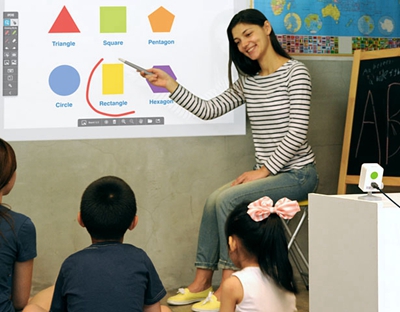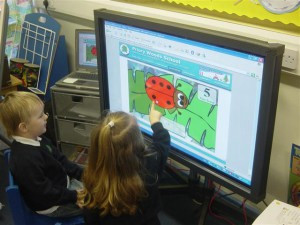In
the old days teachers displayed lesson information via chalkboard or overhead
projector. Modern technology has created many fascinating alternatives to these
methods. Among them are interactive flat panels and interactive whiteboards
(IWBs). In this article, we will discuss and compare these new innovations.
All computer technology for classroom use is quite popular these days. The
demand for interactive displays has risen by almost 20% recently, and the
demand for tablets, laptops and personal computers for classroom use has also
risen significantly. Luckily, affordability coupled with very attractive
leasing agreements have helped put this cutting edge technology within reach
for many classrooms. Both IWBs and interactive flat panels are easily available
to schools through technology funding options. Recent polls show that of the
two high tech information conveyance options, the interactive flat panel is
more popular. What is the difference between these two options?
IWBs Are More Complex

Interactive whiteboards are really unlike traditional whiteboards. They offer
much more than a blank surface. In fact, they combine elements of:
An overhead projector
A computer/Tablet/Laptop
The computer device is used to project images and information onto the white
screen for ease of presentation and instruction. Both the presenter and the
viewers can participate in the presentation by manually moving and changing the
information projected onto the screen. Unfortunately, the interactive nature of
the IWB has not caught on as quickly as had been hoped. Most teachers use these
devices just for presentation.
Interactive Flat Panels Are More Streamlined
Interactive flat panels are even more advanced than whiteboards because no
projector is needed. Instead, a computer display panel with built-in speakers
is central to this device. Both instructor and pupils can manipulate images and
information on the display panel manually or by use of a magnetic stylus for
quick, smooth interaction. Studies show that interactive flat panels are more
popular in the classroom than IWBs even though they are significantly more
expensive.

Using an interactive flat panel is like using an oversized iPad. It is very
easy and very intuitive. Any apps, programs and other options available with an
iPad are available to interactive flat panel users, so teachers have a wealth
of resources readily available. Unlike an IWB screen, the interactive flat
panel screen is easy to see from any vantage point in the classroom. Colors are
always rich and vibrant, and images are always sharp and clear.
Besides, installation of interactive flat panels is quite a bit simpler than
installation of IWBs because the interactive flat panel only consists of one
all-inclusive system; whereas, the IWB consists of an overhead projector, a
speaker system and a computer device. With no overhead projector, there is no
need to bother with replacing filters and bulbs. Using the interactive flat
panel is simpler, too, with a single switch for power and a single cable for
Internet access.
Conclusion
While
both interactive whiteboards and interactive flat panels are stellar additions
to any classroom, it is easy to see why interactive flat panels are rapidly
gaining in popularity. The best advice teachers can follow in using either of
these devices is to become thoroughly skilled and knowledgeable in the use of
the device. No matter which of these options you have, making full use of the
potential of the technology will bring vibrancy and excitement to your lessons.
Previous:Things To Be Taken Into Account Before Installing An Interactive Display
Next:Choosing Between an Interactive Display and a Projector

